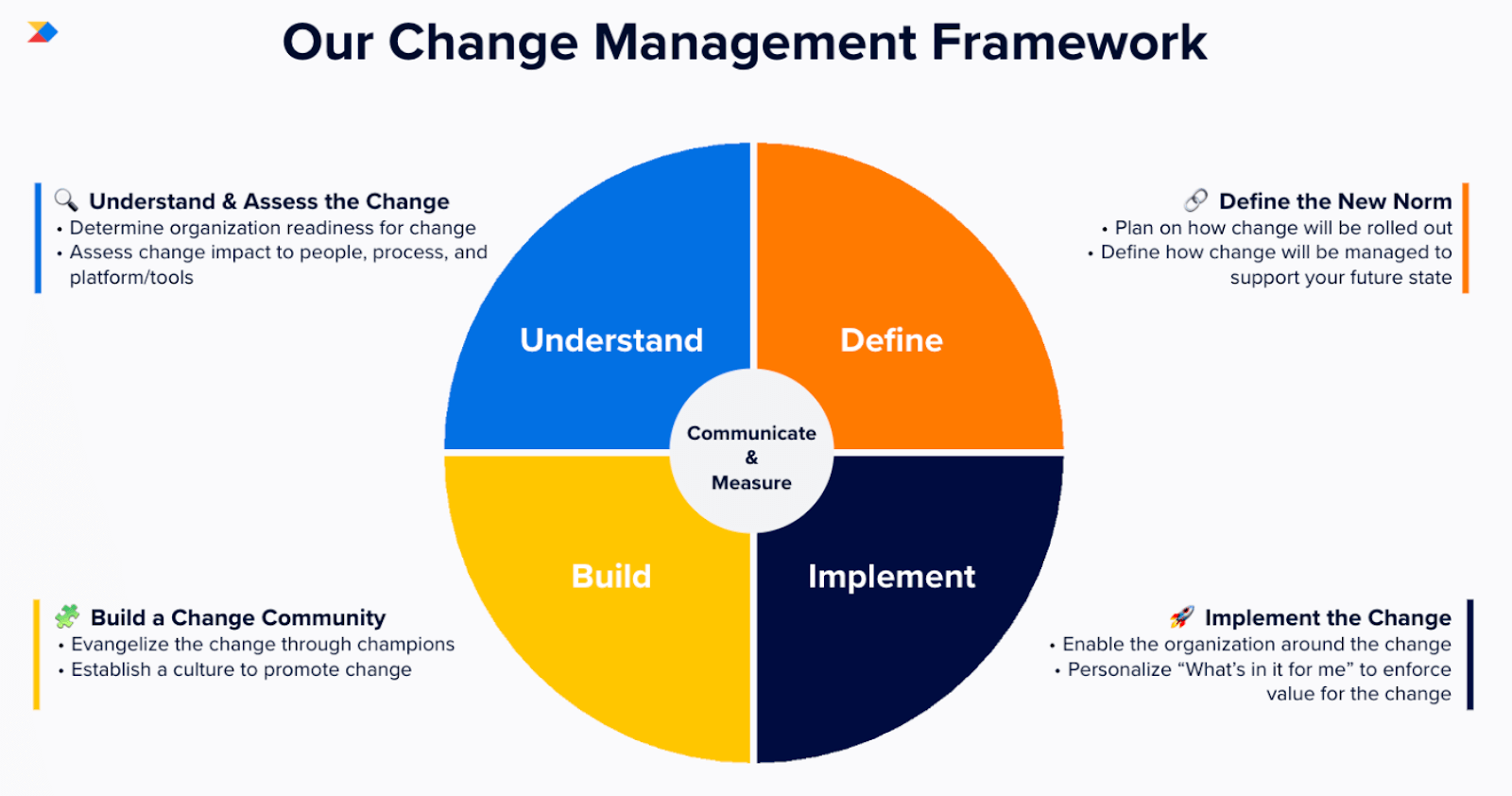Introducing Productboard Pulse. Exec-level insights into what your customers need, powered by AI.
Learn more
Change is a funny thing. While we’re certainly wired to resist change in favor of consistency, the status quo, comfort in what we know, etc., we’re also wired to adapt. This built-in ability to acclimate to different environments and new ways of doing things has been a necessary part of both our growth and survival since the beginning.
It’s with these opposing mental models in mind that we at Productboard strive to help our customers think positively and holistically about the change they wish to drive, including improving product practices and processes. We want businesses to understand the potential, org-wide impact of change, how to adopt and measure adoption, and what it takes to brave the road less traveled. Easier said than done, of course. It’s important to keep in mind that asking people to change is also asking them to leave a well-trod path for the unknown, and something they might not be good at right away.
When you go through any such transformation, whether that’s integrating a new tool within your tech stack or redefining your entire approach, friction and failure are common. We recommend starting with a strategy for managing the adjustment period (change management) to avoid such pitfalls.
Joshua Childs, Director of Product Management, Email Solutions, Validity, joined us in a recent webinar to discuss his own change management process and provide tips for success. As a new employee in 2020, he was not only faced with the challenges associated with onboarding, but also the volatile nature of that year.
We’ve summarized his advice in a handful of tips:
The first and most important step when it comes to change is to have a deep understanding of which areas are ripe for optimization. You can achieve this by setting up 1:1s with stakeholders and simply ask how they approach their work: where do they experience the most success? Where do they struggle? You’ll also want to dig into how individuals have gone about solving the latter. Smart people find ways of being successful despite not having purpose-built tools, so don’t assume there aren’t already solutions or workarounds in place.
In Childs’s case, the size of the organization was the most daunting factor in this particular process. Once he understood the opportunities for optimization, he needed to find a way to resonate with multiple product teams, each with its own cultural history and internal logic for approaching development. “You don’t want to disrupt good results, he said. “It’s more effective to use soft power, and lead by example.”
In this case, leading by example meant using Productboard to have conversations about the product teams’ work in the abstract, rather than the typical practice of running down a list of projects and statuses. This helped to surface each individual’s specific vulnerabilities, which are important to understand for successful, global adoption.
“Product managers are used to having to facilitate others, while having nothing to help us perform the job of facilitating,” he explained. “We’re the type of people who are good at just figuring it out– we’re made to find a way through. Our stacks are usually tools that our stakeholders use, but actually working through backlogged decision making processes in a purpose-built environment was new, and I used it to cut through the typical PM isolation.”
When it comes to picking change champions, making sure you have a complementary mix is key. Childs ultimately chose the following three personas.
The educator: This person either works alone or with a customer success rep (in this case, from Productboard). They know the product inside and out and can help quickly align those who don’t. This person also creates performance milestones to keep everyone excited and on track.
The helpfully-insistent stakeholder: Also often known as a project manager or coordinator, this person understands what the vision is for the change proposed, and has a decent amount of exposure to the rest of the organization. They hold the right people accountable, and routinely check in on output and the status of promised value.
The team peer: Lastly, you want a peer that’s closely tied to the group you want to adopt change. This person needs to really get the vision, the product (if there is one), and become an influencer who’s excited to demonstrate the value in trying new things.
“Change management is a group effort, so it’s important to sit down and consider who you need and what you need to successfully implement change for the constituency in question,” added Josh. “It takes a village, so you’ve got to be really thoughtful about who does what and take it one step at a time.”
Want more tips like this? Childs deep dives into these suggestions and more in our Change Management 101 webinar.
If you’re new to change management or simply looking for a new approach, we recommend starting with our change management framework. In it, we define the pillars that we’ve found are key to successful shifts: Understand, Define, Build and Implement, with Communicate and Measure at the center of it all.

Hear more from Childs by watching the full interview here.
Productboard is a product management system that enables teams to get the right products to market faster. Built on top of the Product Excellence framework, productboard serves as the dedicated system of record for product managers and aligns everyone on the right features to build next. Access a 15-day free trial of productboard today.
